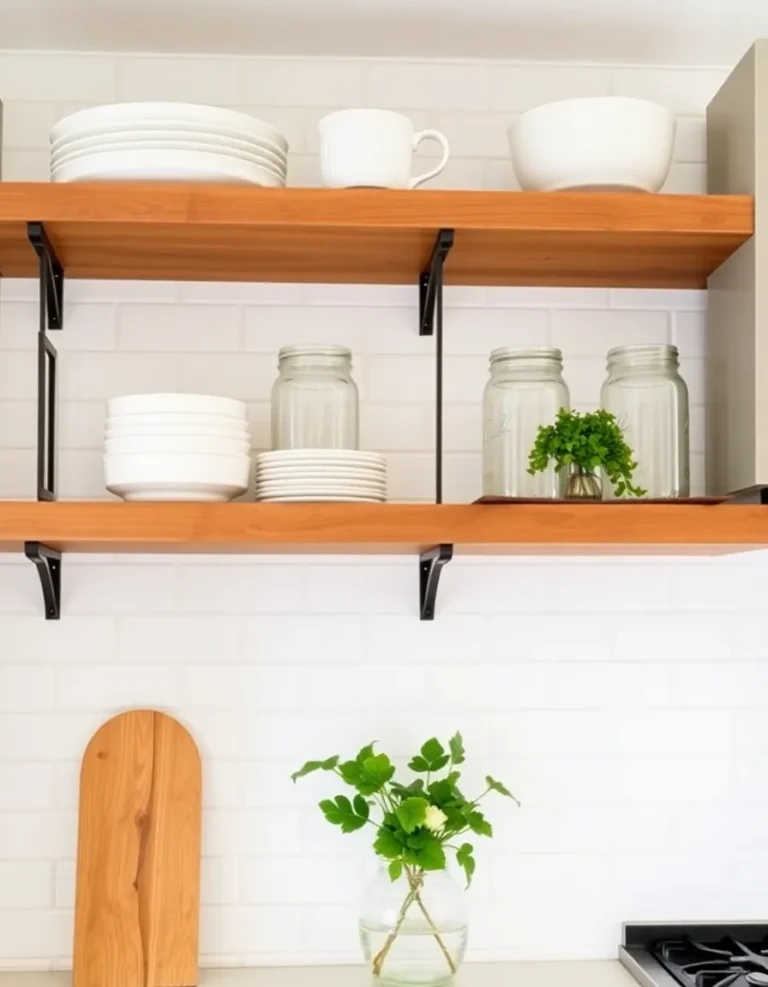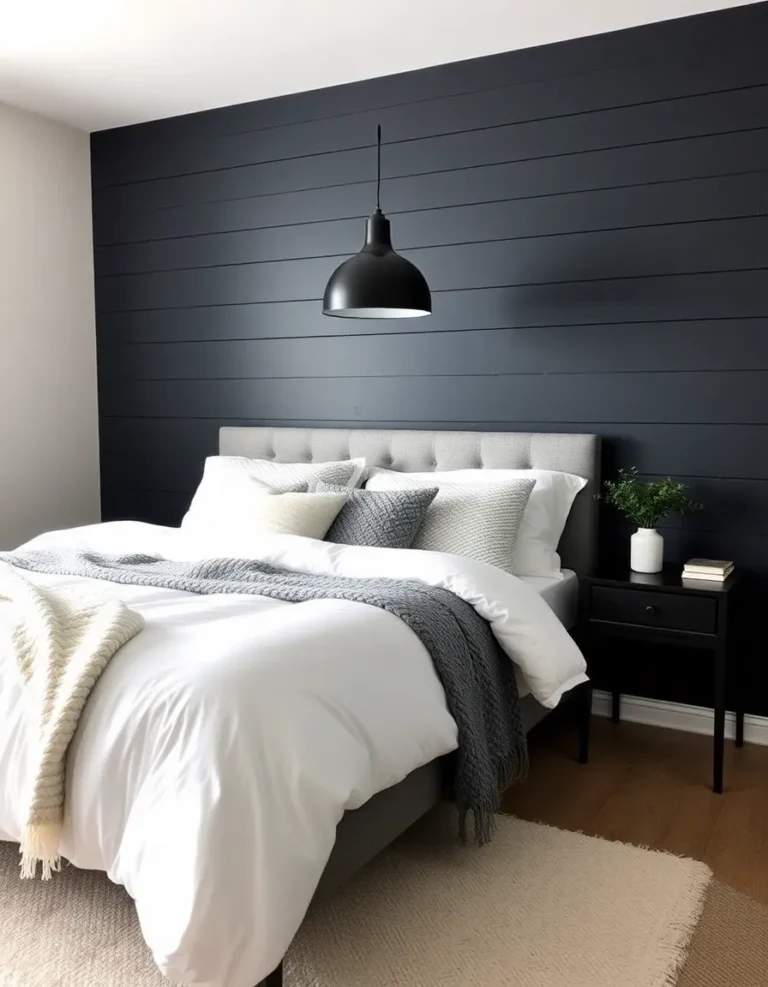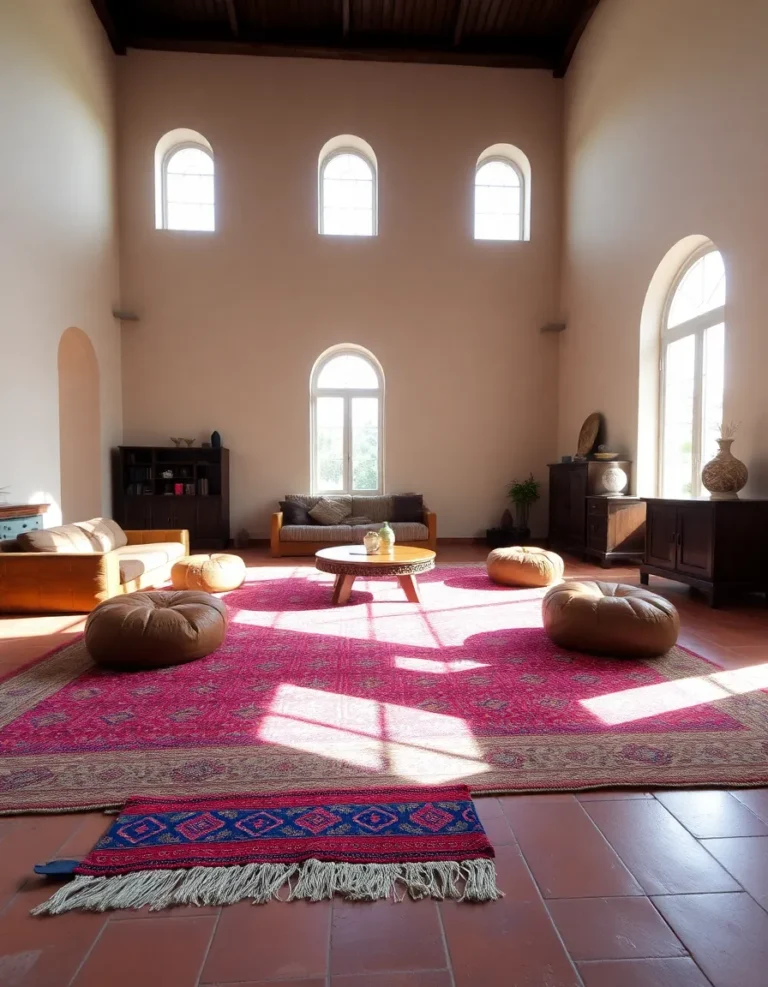17 Minimalist Bedroom Design Ideas for a Peaceful Space
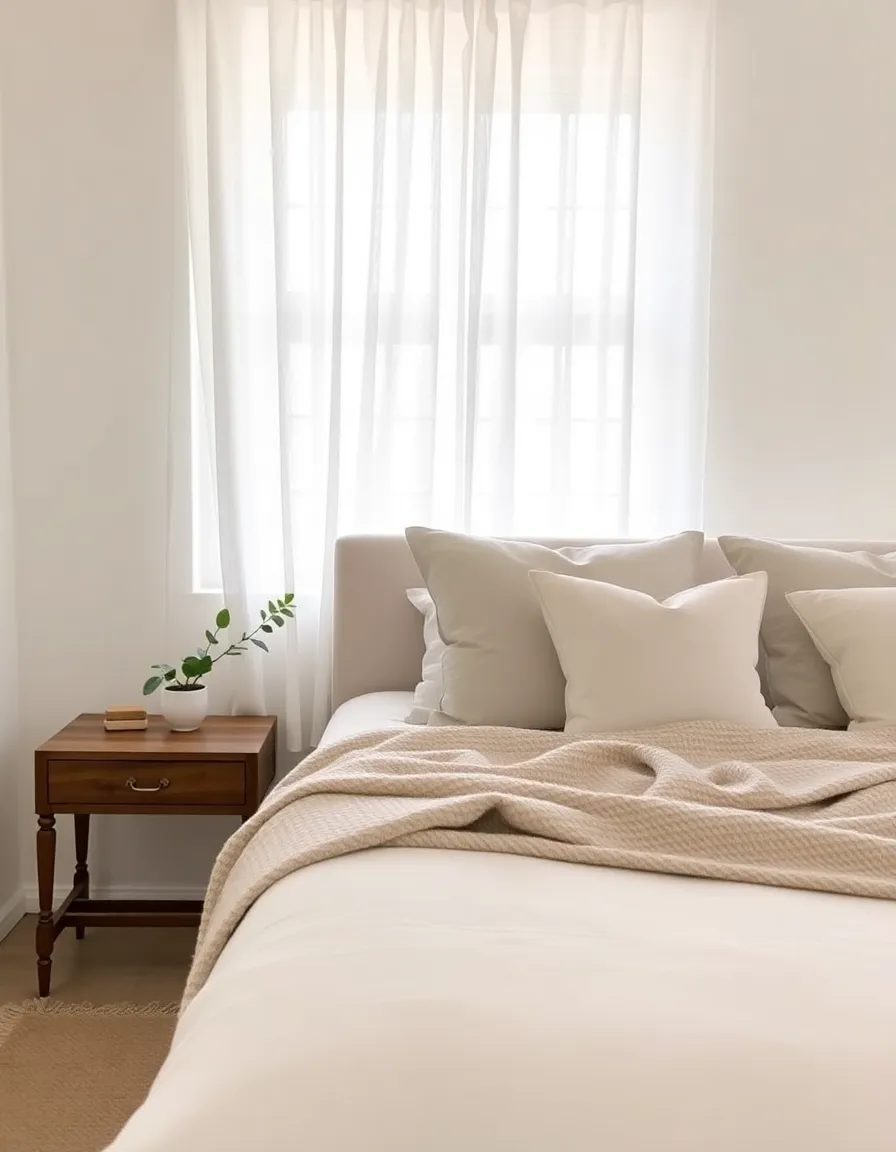
1. Start With a Neutral Color Palette
Let’s be real—nothing screams “minimalist” like a soothing neutral color scheme. Whites, beiges, soft grays, and muted taupes create a blank canvas that instantly calms the mind. I once painted my bedroom a bold teal (don’t ask), and let’s just say my sleep quality improved dramatically when I switched to a soft, warm white. Neutral tones don’t just look clean; they make the space feel bigger and more open. Plus, they’re ridiculously easy to style—no color-clashing nightmares here.
If you’re worried about things looking too sterile, add texture instead of color. Think linen bedding, a chunky knit throw, or a jute rug. These little touches keep the room feeling cozy without overwhelming the senses. And hey, if you absolutely must have a pop of color, limit it to one small accent—like a single throw pillow or a tiny vase. Minimalism is about restraint, after all.
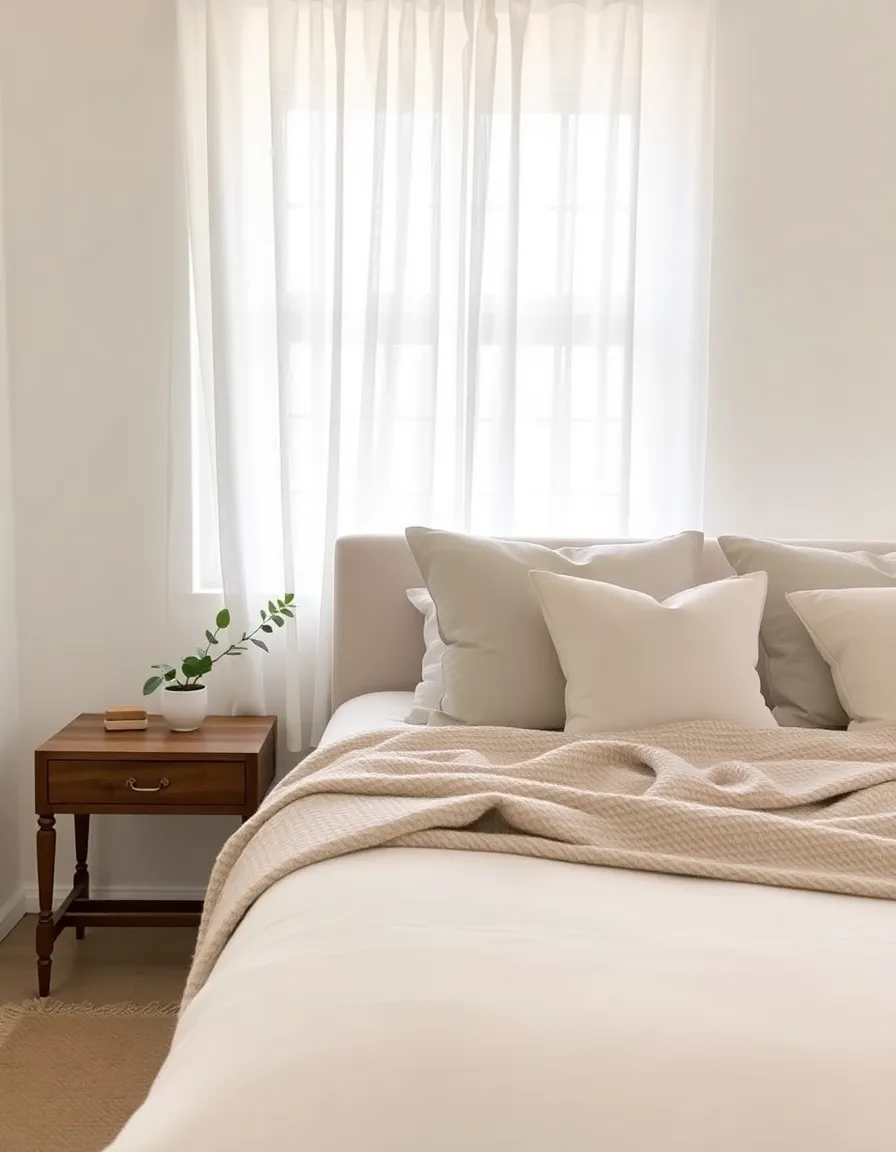
2. Declutter Like Your Sanity Depends on It
Here’s the hard truth: you can’t have a minimalist bedroom if it looks like a storage unit exploded in there. Decluttering is non-negotiable. Start by ruthlessly editing your belongings—if you haven’t used it in a year, toss it, donate it, or (if you’re emotionally attached) store it out of sight. I promise, your future self will thank you when you’re not tripping over that pile of “maybe someday” clothes.
Invest in smart storage solutions like under-bed bins, floating shelves, or a sleek dresser with hidden compartments. The goal? Everything should have a home, and surfaces should stay clear. Pro tip: if your nightstand is currently doubling as a junk drawer, take five minutes right now to clear it off. You’ll sleep better, literally and figuratively.
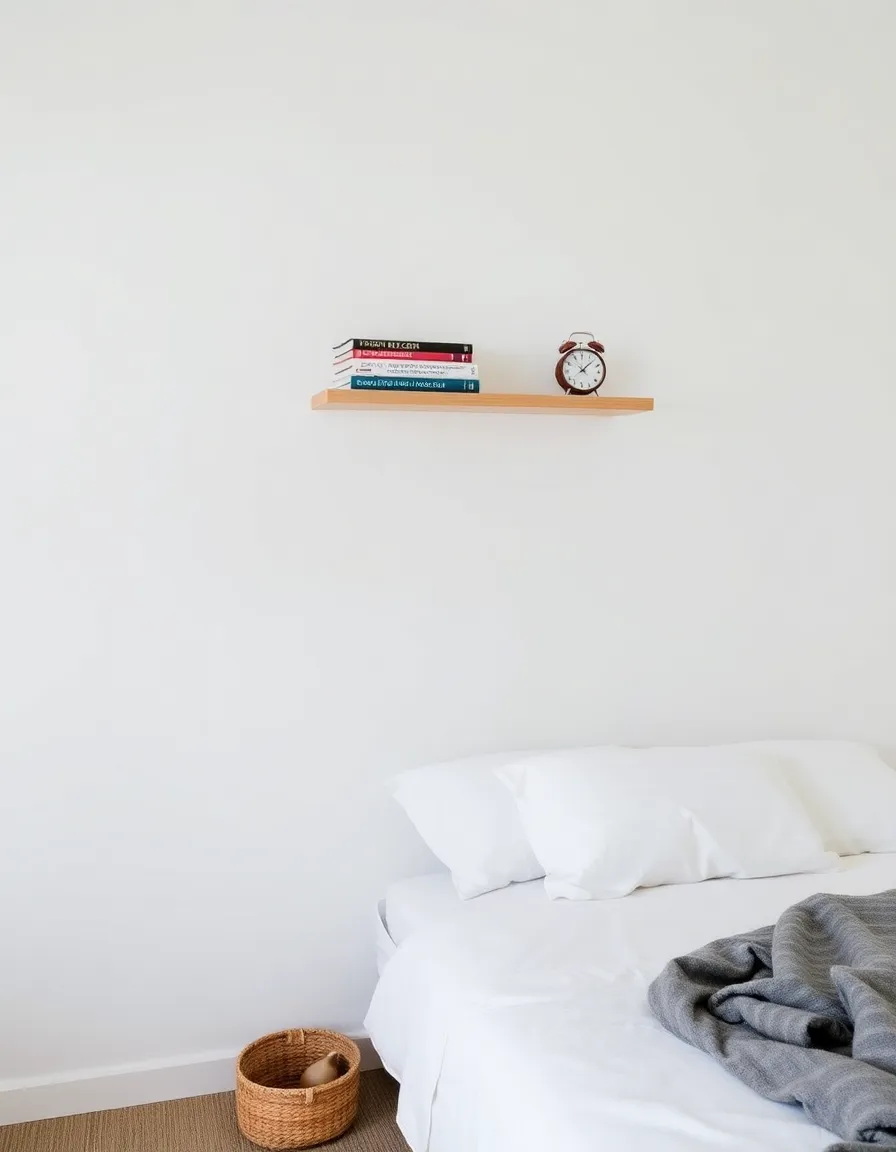
3. Choose a Low-Profile Bed Frame
Nothing anchors a minimalist bedroom quite like a simple, low-profile bed frame. Skip the ornate headboards and bulky footboards—opt for a sleek platform bed or even just a mattress on a minimalist frame. I swapped my old four-poster for a low wooden platform, and suddenly my room felt twice as big. It’s like magic, but without the fairy dust.
If you love the look of a headboard, go for something upholstered in a neutral fabric or a thin wooden design. The key is keeping it streamlined. And if you’re really committed to the minimalist life, a Japanese-style floor mattress (aka a shikibuton) is the ultimate space-saver. Just don’t blame me if you never want to get out of bed.

4. Let Natural Light Take Center Stage
Minimalism and natural light are BFFs. Ditch heavy curtains and let that sunshine in! Sheer, light-filtering curtains or even bare windows (if privacy isn’t an issue) keep the room feeling airy and open. I used to have blackout curtains “for better sleep,” but turns out, waking up with natural light is way more refreshing—and my plants definitely approve.
If you need privacy, try minimalist roller shades or bamboo blinds. They give you control without sacrificing style. And if your room lacks windows? Fake it with warm, layered lighting (more on that later). Just avoid harsh overhead lights—they’re the enemy of cozy vibes.
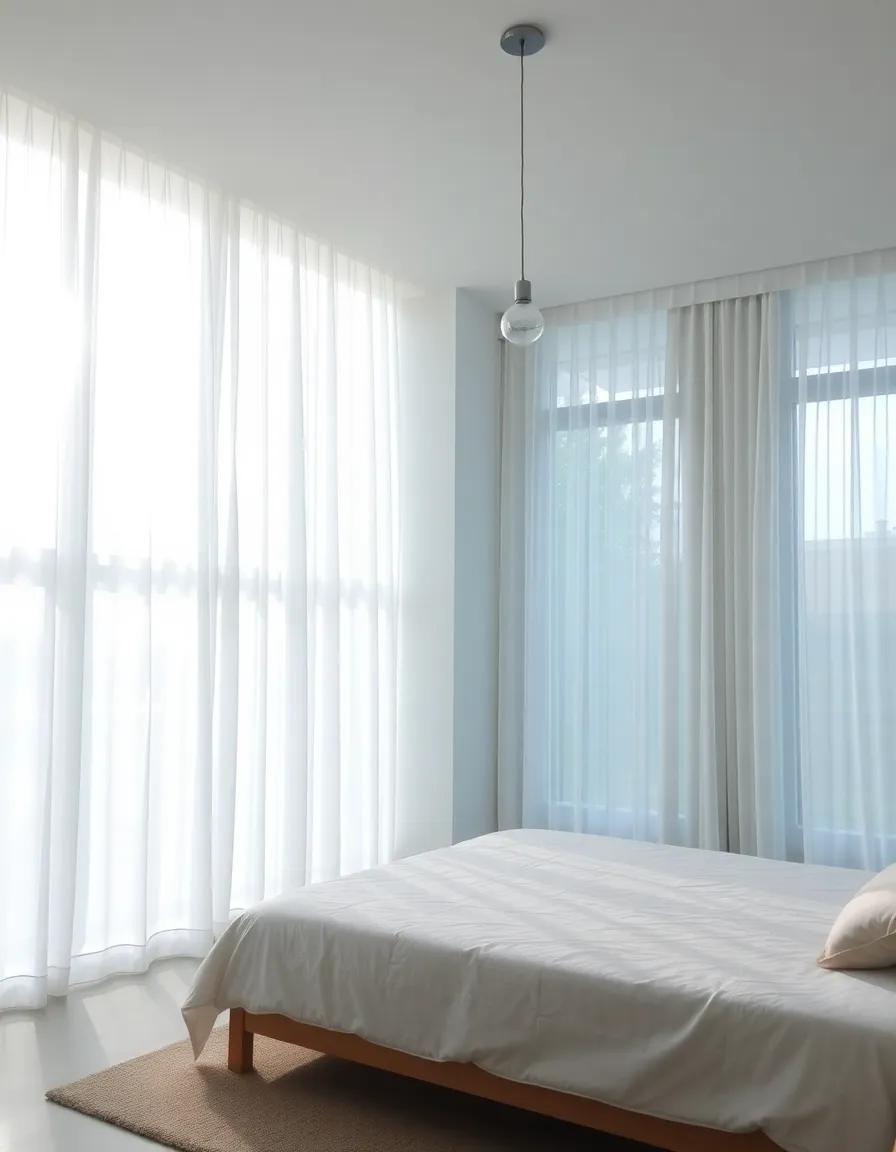
5. Stick to Simple, Functional Furniture
Minimalist furniture = no unnecessary frills. Think clean lines, muted finishes, and pieces that actually serve a purpose. A nightstand with one drawer? Perfect. A massive armoire with ornate carvings? Hard pass. I learned this the hard way after buying a “statement” dresser that ended up being more high-maintenance than my ex.
Stick to a few key pieces: a bed, one or two nightstands, a dresser if needed, and maybe a small chair if you have space. Avoid filling the room just because you can. And if you’re tight on space, look for multifunctional furniture—like a storage ottoman or a wall-mounted desk. Less really is more.
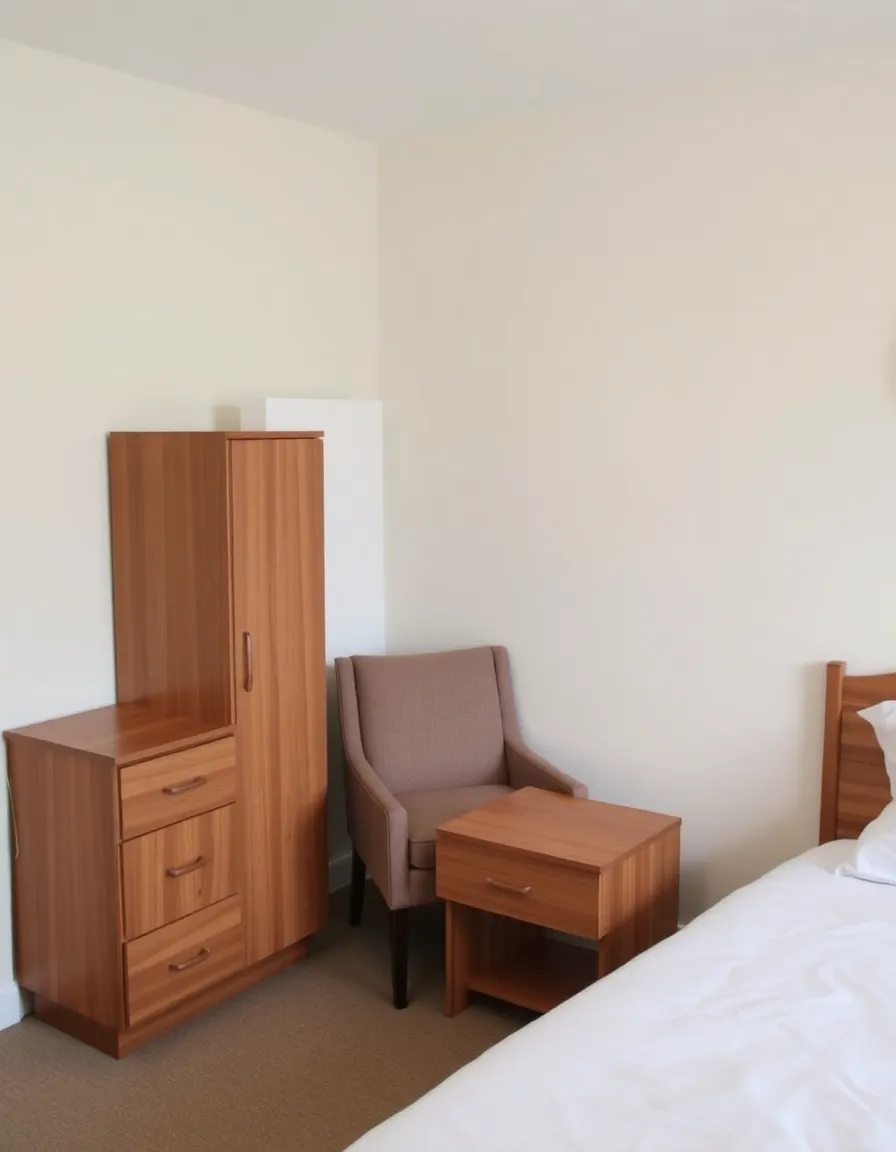
6. Embrace Negative Space
Negative space (aka empty space) is the secret weapon of minimalist design. It gives your eyes a place to rest and makes the room feel intentional rather than chaotic. Resist the urge to fill every wall and corner—let the emptiness work for you. My bedroom used to be a gallery wall explosion, and while it was fun, it was also… a lot.
Try leaving one wall completely bare or keeping surfaces clear except for one decorative item. It feels weird at first (like you forgot to finish decorating), but trust me, it’s calming. And if you’re a maximalist at heart, start small—clear off your nightstand and see how it feels. Baby steps.
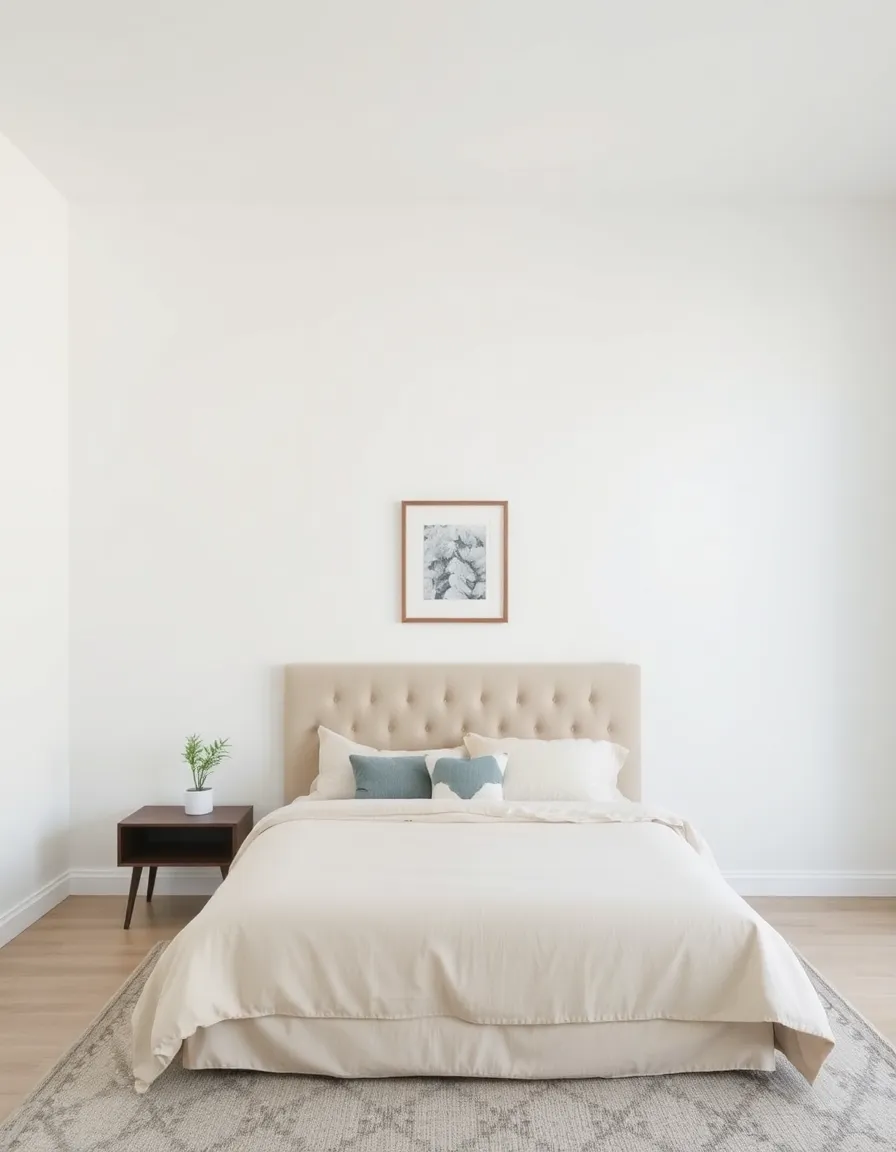
7. Opt for Monochromatic Bedding
Patterned bedding can be cute, but it’s also a fast track to visual chaos. For a truly minimalist look, stick to solid colors—preferably in the same tonal family. A white duvet with white sheets and a white throw? Sounds boring, but it’s oddly luxurious. Add subtle texture with linen or waffle weave to keep it interesting.
If you crave variety, try a tonal layering approach: light gray sheets, a darker gray quilt, and a charcoal throw. It’s cohesive without being matchy-matchy. And please, for the love of minimalism, avoid those bed-in-a-bag sets with 17 mismatched patterns. Your bedroom isn’t a dorm room (unless it is, in which case, I’m sorry).

8. Incorporate Natural Materials
Wood, stone, jute, cotton—these materials bring warmth to a minimalist space without adding clutter. A wooden nightstand, a stone vase, or a jute rug can make the room feel grounded and organic. I swapped my plastic laundry hamper for a woven seagrass one, and suddenly my socks felt fancier. Weird flex, but okay.
Stick to one or two natural materials to keep things cohesive. Too many textures can feel busy, even if they’re all neutral. And avoid anything too polished or shiny—matte finishes are your friend here.
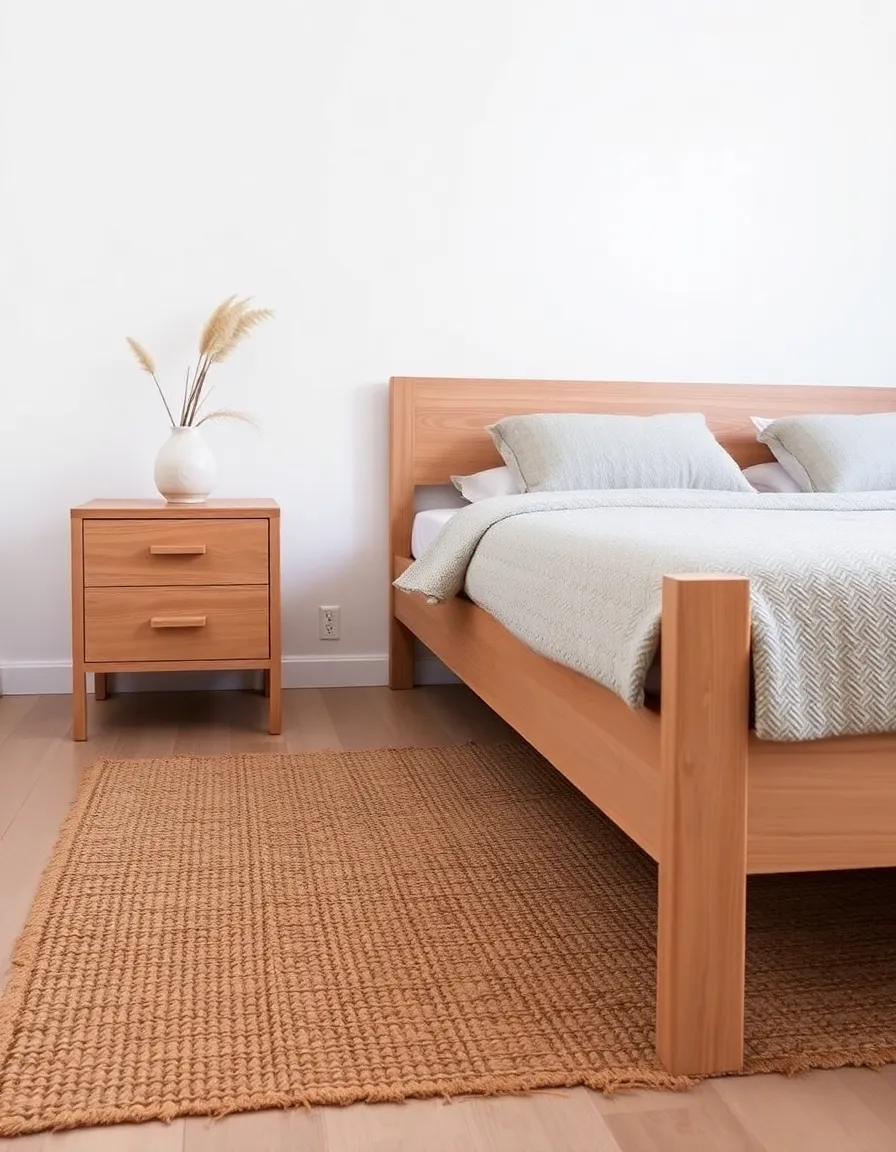
9. Limit Decor to a Few Meaningful Pieces
Minimalism isn’t about having zero decor—it’s about choosing pieces that actually mean something to you. Instead of filling every surface with knickknacks, pick one or two items you love. A small sculpture, a framed photo, or a single candle can add personality without overwhelming the space.
I used to collect random decor because it was “on trend,” but now I only keep things that make me happy. Spoiler: my room feels way more “me” now. So ask yourself: does this item spark joy? (Thanks, Marie Kondo.) If not, let it go.
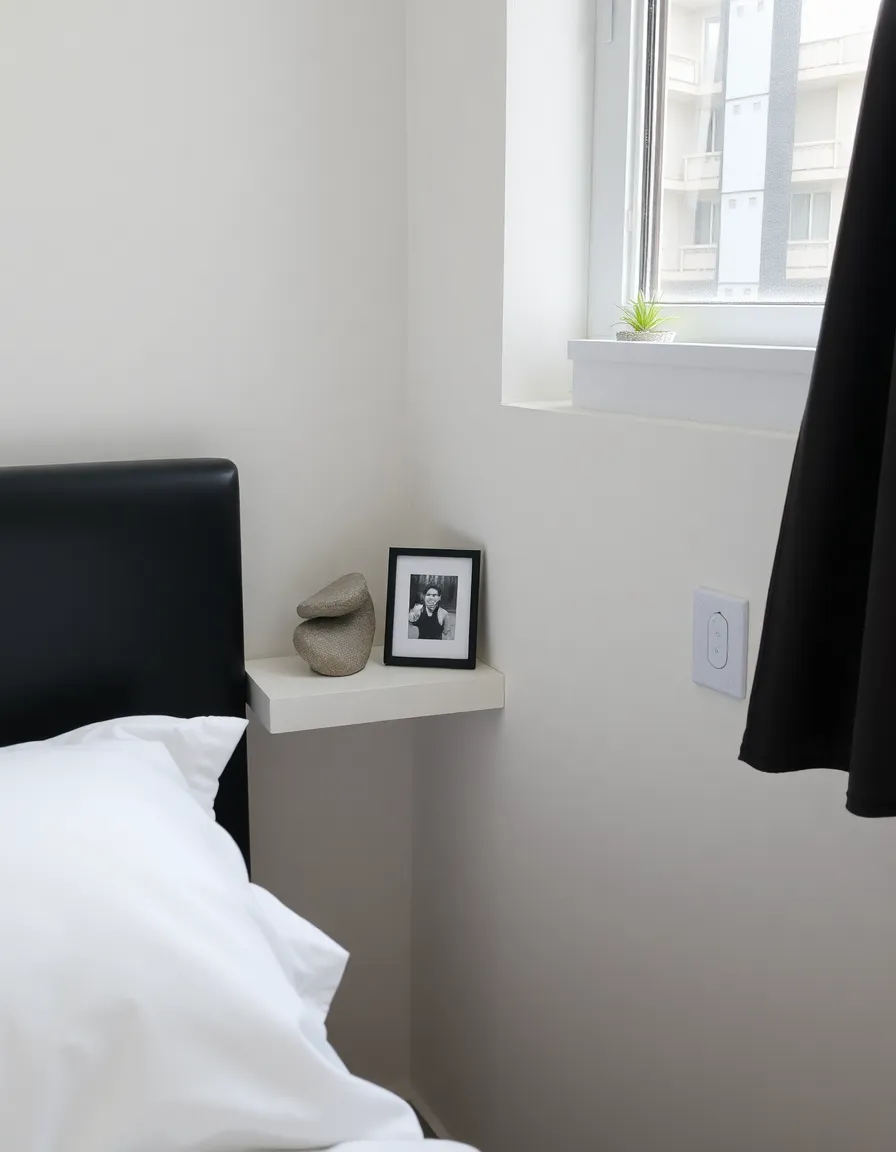
10. Hide the Tech (Or Ditch It)
Wires, chargers, and gadgets are the arch-nemeses of a peaceful bedroom. If you can, keep tech out entirely—your brain will thank you. But if you must have a TV or phone charger, hide the evidence. Use cable organizers, tuck devices into drawers, or invest in a sleek charging station that doesn’t look like a spaceship.
I moved my TV to the living room and replaced my clunky alarm clock with a simple analog one. Best decision ever. Now my bedroom is a tech-free sanctuary where I actually unwind instead of doomscrolling until 2 a.m.
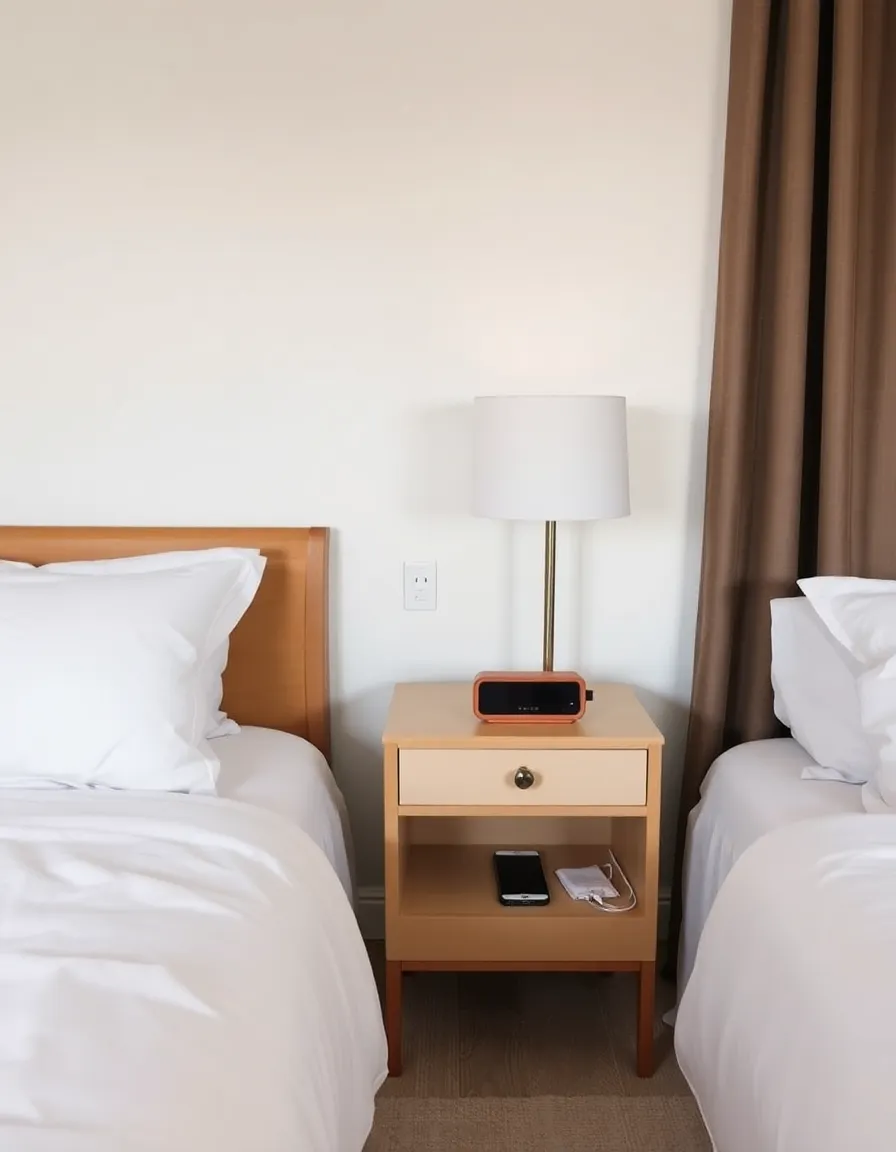
11. Use Soft, Layered Lighting
Harsh overhead lighting is the opposite of cozy. Instead, layer soft, warm light sources to create a relaxing ambiance. A bedside lamp, a floor lamp in the corner, and maybe some string lights or a small candle set the mood without blinding you. I swapped my bright white bulbs for warm ones, and suddenly my bedroom felt like a spa. Well, a budget spa.
Dimmers are also a game-changer—being able to adjust the lighting based on your mood is peak adulting. And if you’re feeling fancy, smart bulbs that change color temperature are worth the splurge. Just don’t turn your room into a rave.
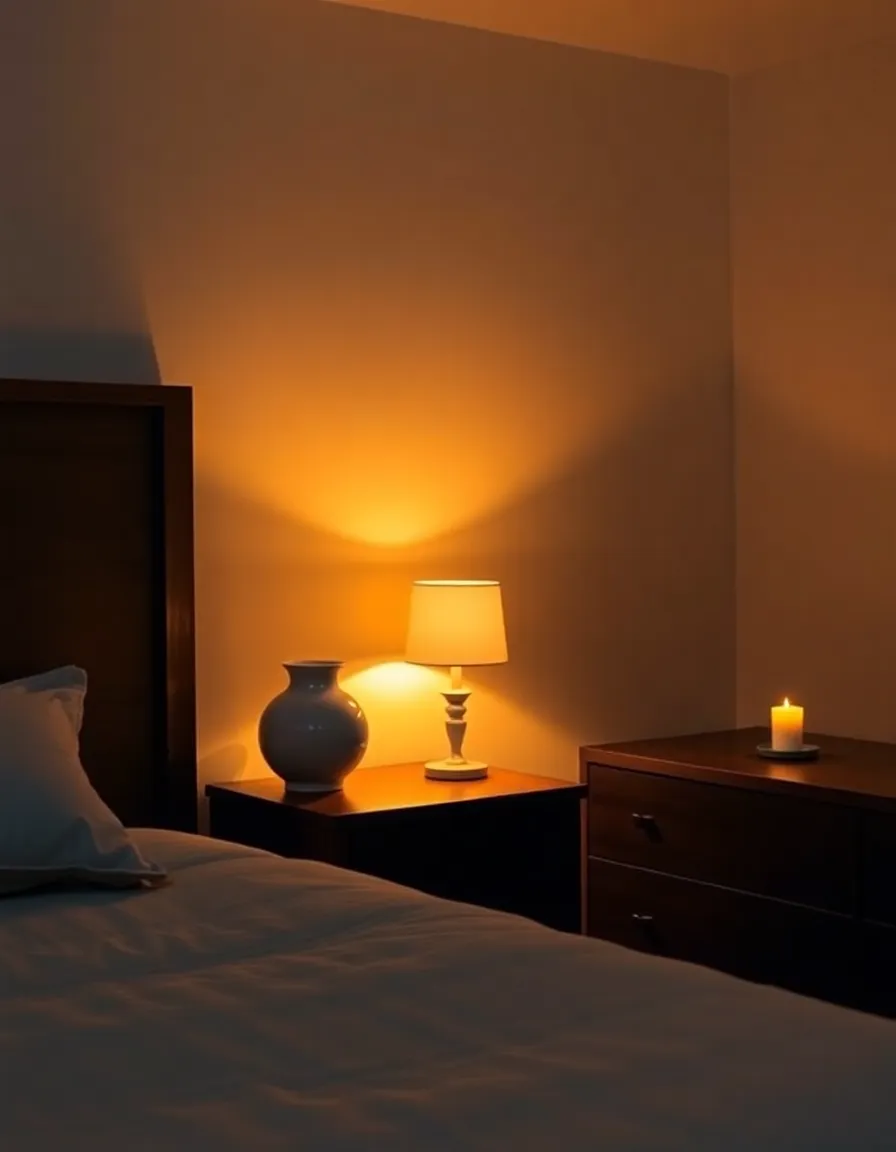
12. Keep the Floor Clear
A cluttered floor = a cluttered mind. Keep pathways open and avoid piling things on the ground (yes, even that “I’ll fold it later” laundry). A single rug under the bed or beside it can define the space without adding visual noise. I went rug-free for a while and loved how easy it was to sweep—but then my feet got cold, so now I have a thin, neutral jute one.
If you have pets or kids, this one might feel impossible, but do your best. At least keep the area around your bed clear so you’re not stepping on Legos at 3 a.m.
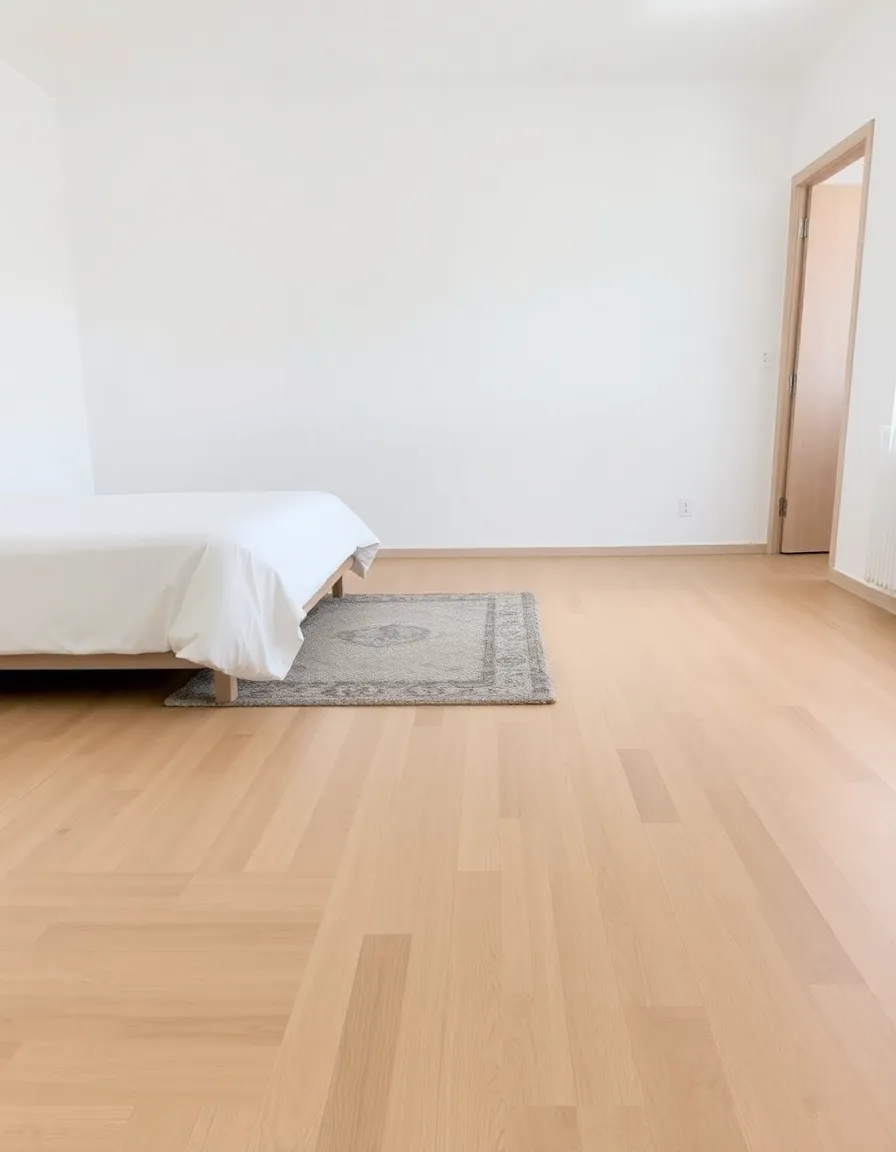
13. Go for a Monochrome Art Statement
One large, simple piece of art beats a gallery wall in a minimalist bedroom. Choose something monochromatic or abstract—think black-and-white photography, a single line drawing, or a muted landscape. I have a giant black-and-white print of a wave above my bed, and it’s the only “wow” piece in the room. Less is more, folks.
If you’re not ready to commit to one big piece, try a small framed print leaning on your dresser. Just avoid cluttering the walls with too many small frames. Let the art breathe.
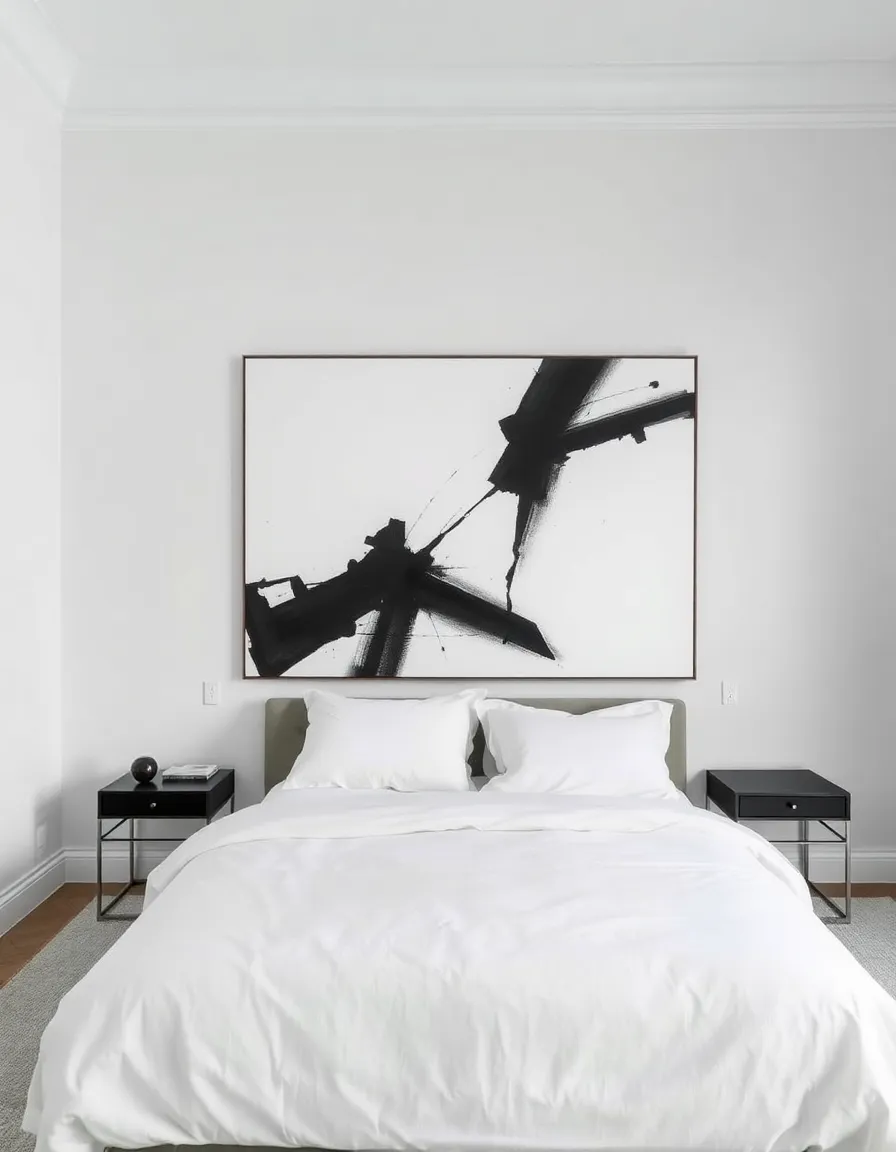
14. Choose a Single Focal Point
Every minimalist room needs one focal point—something that draws the eye without competing for attention. It could be your bed, a piece of art, or even a stunning window view. In my last apartment, the focal point was a huge arched window; in my current place, it’s my bed with its perfectly layered bedding. Work with what you’ve got.
Once you’ve chosen your focal point, arrange everything else to complement it. Keep other areas of the room understated so the eye knows where to land. No one should walk in and feel visually assaulted by competing elements.
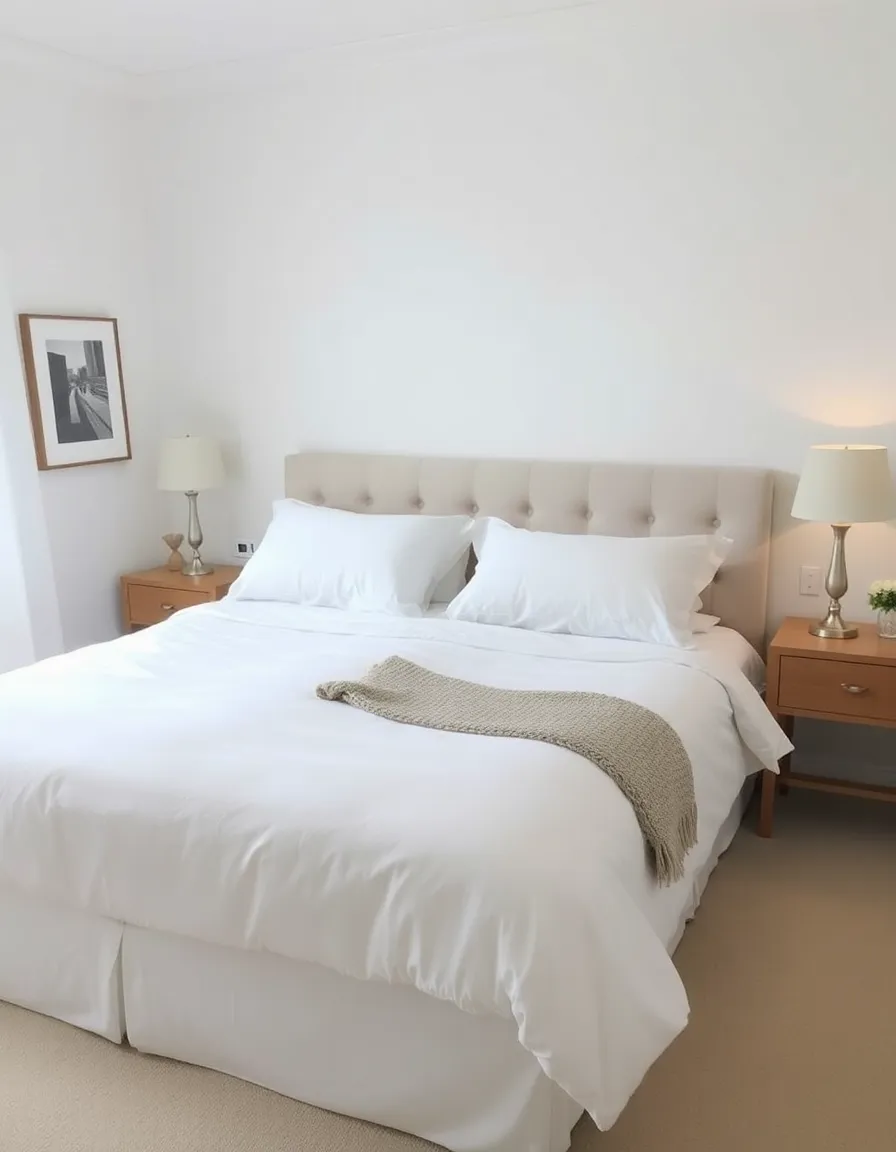
15. Opt for Built-In Storage
Built-ins are a minimalist’s dream—they maximize storage without eating up floor space. If you’re renovating, consider built-in shelves or a closet system. If not, freestanding cabinets that blend into the wall color work too. IKEA’s PAX system is a budget-friendly favorite for a reason.
The goal is to keep everything tucked away but easily accessible. No one wants to play Tetris with their sweaters every morning. And if you’re renting? Use baskets, under-bed storage, and vertical shelves to fake the built-in look.
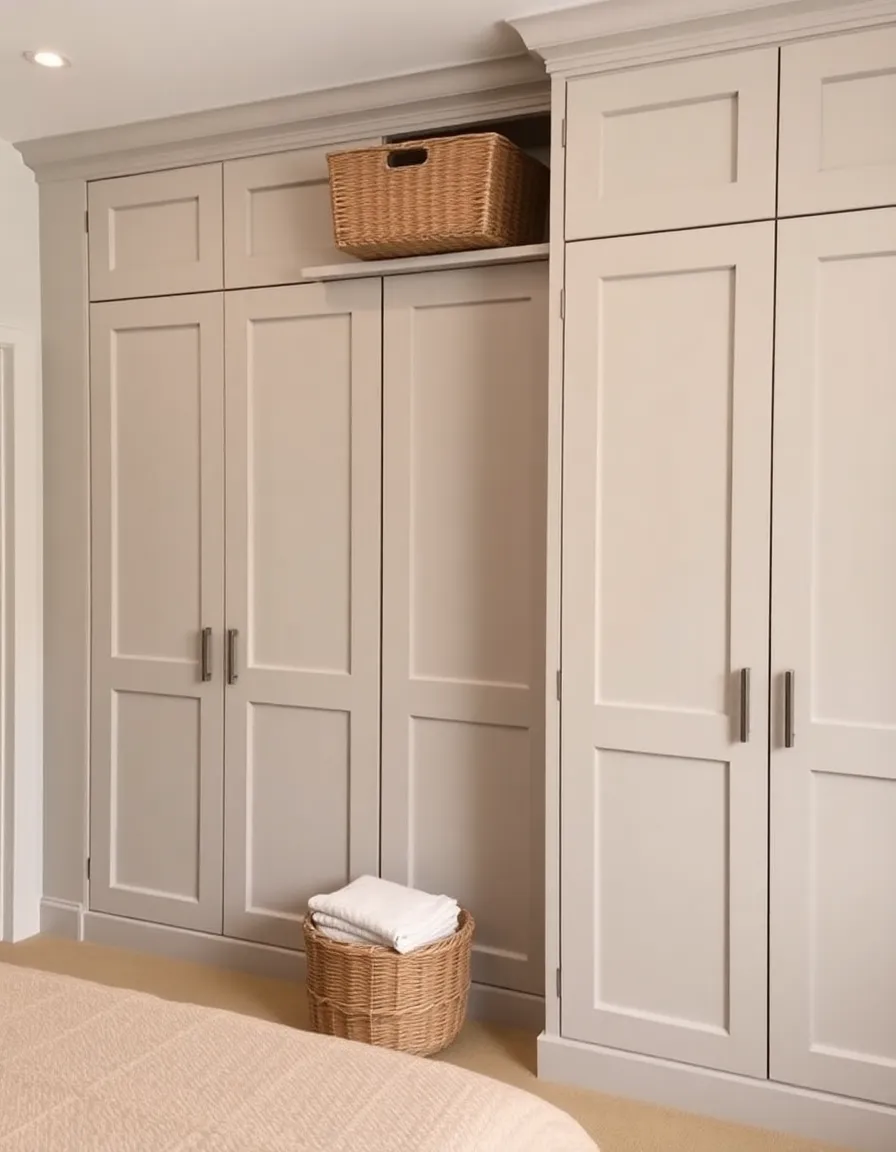
16. Keep Window Treatments Simple
Heavy drapes belong in a Victorian novel, not a minimalist bedroom. Stick to simple, functional window treatments like roller shades, bamboo blinds, or sheer panels. I’m a sucker for linen curtains—they filter light beautifully and add subtle texture without bulk.
If privacy isn’t an issue, leave windows bare. Nothing feels more open and airy than unobstructed glass. And if you’re dealing with an ugly view? A frosted film or a single sheer panel can soften it without darkening the room.
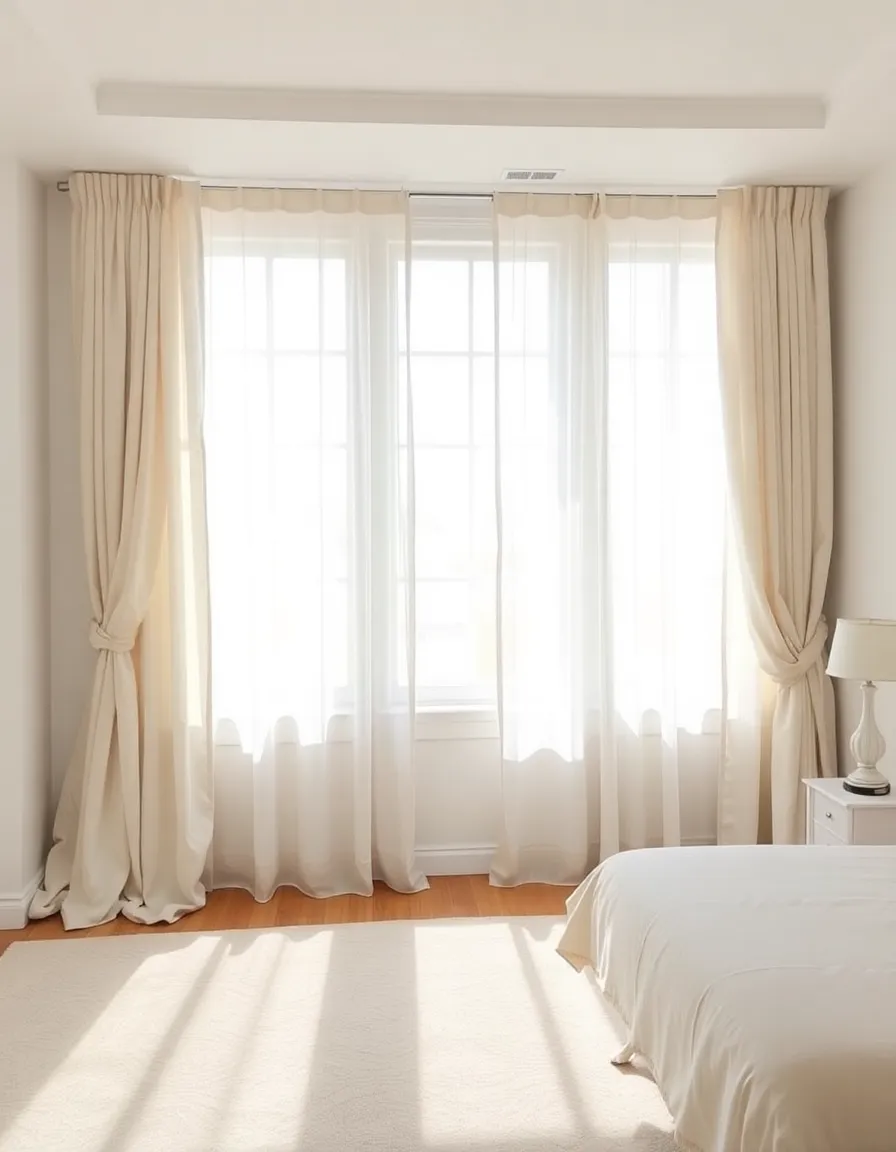
17. Make Your Bed Every Morning
This one’s non-negotiable. A made bed instantly makes the room feel put-together, even if the rest of your life is chaos. It takes two minutes and sets the tone for the day. I used to be a “why bother?” person until I realized how much calmer I felt walking into a tidy room after work.
Keep bedding simple so it’s easy to straighten—no 12-pillow situations unless you have a butler. A duvet and two pillows are plenty. And if you’re really lazy (no judgment), just pull the covers up and call it a day. Done is better than perfect.
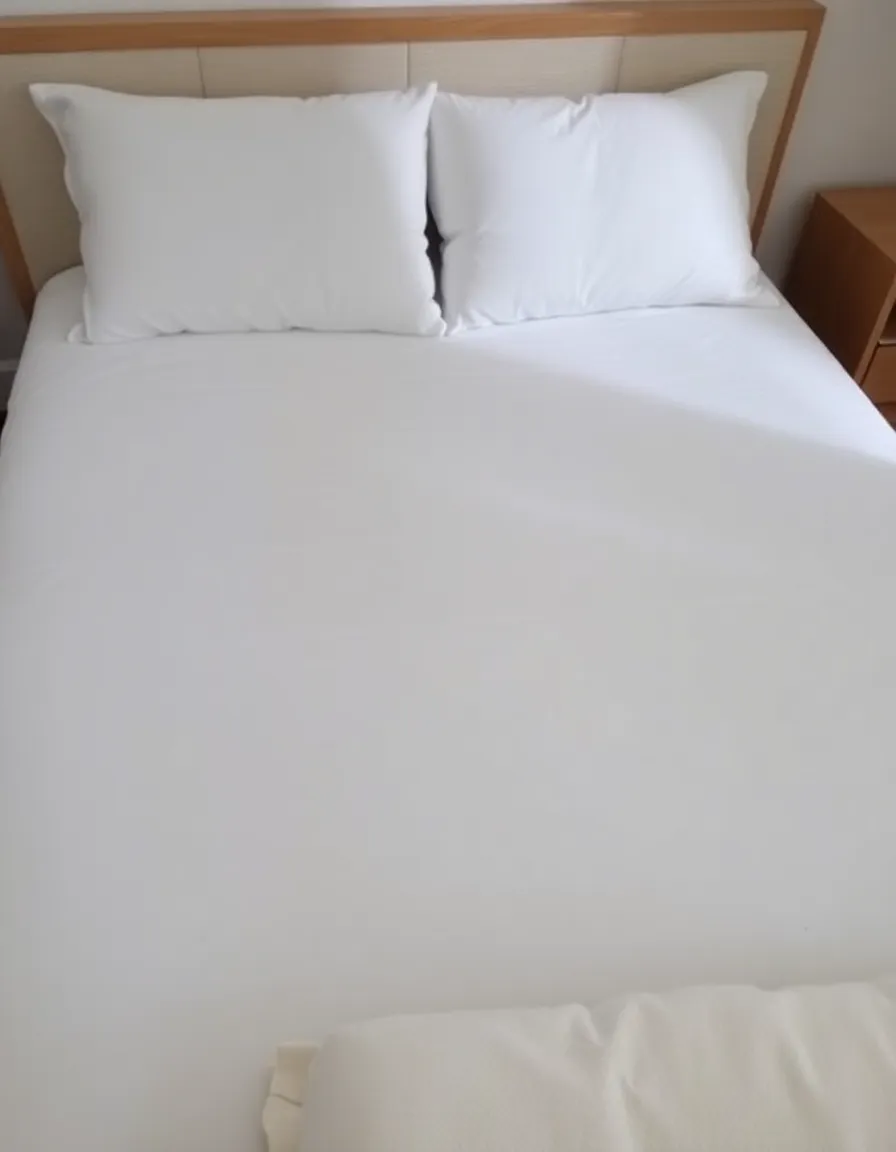
And there you have it—17 ways to turn your bedroom into a minimalist sanctuary. Whether you go all-in or just adopt a few of these ideas, the goal is to create a space that feels calm, intentional, and totally you. Now go forth and declutter (or at least make your bed). Happy minimalizing!

